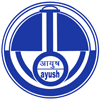Manuscripts

Bar' al-Sa'ah Tarjama (برء الساعۃ ترجمه)
Introductory
| S.NO : | 4659 | AMAR ID : | AMAR/MS/4659 |
|---|---|---|---|
| TITLE OF THE MANUSCRIPT : | Bar' al-Sa'ah Tarjama (برء الساعۃ ترجمه) | SOURCE LOCATION : | National Institute of Indian Medical Heritage (NIIMH) in Hyderabad |
| PLACE & STATE : | Telangana | ACCESSION NO. AT SOURCE : | |
| ACCESSION NO.AT NIIMH, HYDERBAD : | 1987 |
Technical
| OTHER TITLE : | / | AUTHOR NAME : | /Muhammad bin Zakariya al-Razi (محمد بن زکریا الرازی), |
|---|---|---|---|
| CO-AUTHOR NAME : | REDACTOR'S NAME : | ||
| COMMENTATOR NAME : | NAME OF THE COMMENTARY : | ||
| LANGUAGE OF THE COMMENTATOR: | AUTHOR DATE : | 865-935 A.D | |
| COMMENTATOR DATE : | SCRIBE : | NA | |
| SCRIBE DATE AND PLACE : | 07-04-1183 AH | AYUSH SYSTEM : | Unani |
| SUBJECT: | Medicine | LANGUAGE : | Persian |
| SCRIPT : | Persian |
Textual
| AUTHOR'S BEGINNING SENTENCE (UNICODE)/(DIACRITICAL) : | Hamd be had wa sanye be adad/ | ||
|---|---|---|---|
| SCRIBE'S BEGINNING SENTENCE (UNICODE)/(DIACRITICAL) : | / | ||
| AUTHOR'S ENDING SENTENCE (UNICODE)/(DIACRITICAL) : | Tamam shud en Risla Tarjama Bara al-Saah/ | ||
| SCRIBES ENDING SENTENCE (UNICODE)/(DIACRITICAL) : | / | ||
| COLOPHON (UNICODE)/(DIACRITICAL) : | 07-04-1183 AH/ | CHAPERTIZATION: | Not chapterised |
| EXTENT : | Incomplete | ||
| REMARKS : | Red letters are used throughout the manuscript, particularly to highlight chapters | ||
Physical
| MATERIAL : | Paper manuscript | SIZE : | |
|---|---|---|---|
| No. of FOLIOS : | 4 | No. of PAGES : | 9 |
| No. of LINES PER FOLIOS : | No. of LINES PER PAGE: | 17 | |
| No. of LETTERS PER LINE : | 12 | GRANTHAMANA : | |
| MISSING FOLIOS : | Some Folios are missing at the beginning and at the end | ILLUSTRATIONS : | |
| CONDITION : | It is written in a beautifully executed Nastaliq script. |
Catalogue
| CATALOGUE STATUS : | CATALOGUE MSS.NUMBER : | 1987 | |
|---|---|---|---|
| CATALOGUE TITLE : | CATALOGUE PART : | ||
| CATALOGUE VOLUME : | CATALOGUE EDITOR: | ||
| CATALOGUE PUBLISHER : | CATALOGUE YEAR OF PUBLICATION : | ||
| CATALOGUE ADDITIONAL DETAILS : |
Publication Details
| PUBLICATION STATUS : | Arabic text was published by Al-Azārīṭah, Iskandarīyah, Cairo, Egypt, in 1999. Urdu & Persian Translations were also published. | PUBLICATION LANGUAGE : | |
|---|---|---|---|
| PUBLICATION AVAILABILITY : | PUBLICATION EDITOR : | ||
| PUBLICATION TRANSLATOR : | PUBLICATION PUBLISHER: | ||
| PUBLICATION YEAR: | PUBLICATION PLACE : | ||
| ABOUT MANUSCRIPT : | Bar' al-Sa'ah treatise, originally translated from Arabic into Persian by Mohammad Masum Khan,, based on the work of the renowned physician Rhazes (Al-Razi). This manuscript is particularly intriguing due to the unique circumstances surrounding its composition by Rhazes, as well as its later translation into Persian by a scholar-physician from Golconda, Hyderabad. There is a widespread misconception that the Unani system of medicine lacks a concept of emergency therapy. This belief is fundamentally incorrect and contradicts established facts. A review of ancient literature reveals that nearly all prominent physician-authors integrated their research and experiments on emergency therapeutics into their works. Notably, some even specialized in this field, such as Abu Bakr Mohammad Bin Zakaria Razi, who, in addition to his encyclopedic work Al-Hawi fi-Tibb, authored a book specifically focused on emergency therapy titled Bara'us Sa'ah. This work articulates the clear concept of "Emergency Therapy in the Unani System of Medicine." Razi's decision to pursue this subject arose from scientific discussions with esteemed Unani physicians at the court of Wazir Abul-Qasim ibn Abdullah, following the Wazir's directive. The guidelines and treatments Razi outlined remain valid even after the passage of a millennium. This author aims to illuminate the significance of emergency therapy in the Unani system through Razi's seminal work, Bara'us Sa'ah This bold claim astonished the other court physicians, and Wazir Abul-Qasim was so impressed that he instructed Razi to compile a book detailing the methods for addressing on-the-spot curable ailments. This would provide valuable guidance for both the public and physicians in emergency and first aid situations. Following the Wazir’s directive, Razi swiftly compiled the booklet, which consists of 23 chapters offering effective, immediate treatments. He titled it Barus-Sa'ah, meaning “immediate relief” or “relief within one hour.” Contents: This booklet comprises the following ailments (from head to toe) across 23 chapters: 1. Headache (Suda) 2. Ophthalmic Diseases (Ain) 3. Coryza (Zokam) 4. Dental Ailments (Asnan) 5. Foul Smell of Mouth (Bhukhar) 6. Diphtheria (Khawaneeq) 7. Leeching (Taleeq) 8. Migraine (Shaqeeqa) 9. Epilepsy (Sara) 10. Diseases of the Ears (Sama) 11. Epistaxis (Ruaf) 12. Piles (Bawaseer) 13. Fistula (Nawaseer) 14. Scabies (Jarb) 15. Body Ache (Wajul-Aza) 16. Pain Due to Burn (Taujee Harqun-nar) 17. Prolapsus Ani (Khuroojul-maqad) 18. Dysentery (Zaheer) 19. Colic Pain (Coolanj) 20. Diarrhea (Khilfa) 21. Sciatica (Arqun-nisa) 22. Fatigue and Toil (Aya-wa-tab) 23. Itching on the Limbs (Al-Hikka Alal-Atraf) A review of these ailments clearly indicates that Razi included numerous conditions in his list of emergency therapeutics over a millennium ago. A glimpse into this work will substantiate Razi's assertion of treating diseases within one hour. | ||
Digitization Status
| DIGITIZED BY : | CCRAS-NIIMH | DIGITIZATION DATE : |
|---|
